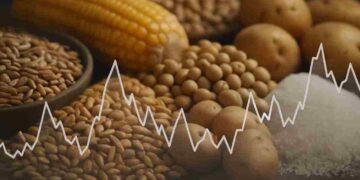Santa Catarina’s Agricultural Performance: A Mixed Bag
The May 2025 edition of the Epagri/Cepa Agricultural Bulletin presented a contrasting outlook for Santa Catarina’s agriculture. While record productivity was observed across key crops, an oversupply in domestic and global markets exerted significant downward pressure on prices.
Rice: Historic Yields, Market Weakness
Santa Catarina’s rice growers achieved record productivity averaging 8.73 t/ha, yet the commodity faced a 30% price drop by the end of April compared to the same period in 2024. Additionally, exports fell 44%, further intensifying market concerns.
Beans: High Output, Diverging Prices
Total bean production rose by 14%, fueled primarily by a successful first harvest. However, black beans, the region’s primary variety, saw a 15% price decline, while carioca beans experienced a 5% appreciation, reflecting varied demand dynamics across sub-markets.
Corn: Efficiency Gains Offset Area Reduction
Corn production grew by over 25%, despite a reduction in planted area, marking a historic average productivity of 9.8 t/ha. This record yield helped reduce transportation costs for key livestock sectors such as poultry and pork, even though corn prices declined by almost 5% in May.
Soybeans: Production Up, Prices Volatile
Soybean output climbed by 19.5%, with average yields estimated at 4,035 kg/ha. Despite this productivity surge, price volatility remains a challenge, driven by external market influences and speculative trading.
Vegetable Sector Trends
Garlic prices and profitability remained stable despite high import volumes, illustrating strong domestic market support. In contrast, onion prices continue to lag below production costs, negatively impacting farmer income and raising concerns about the crop’s economic sustainability.
Broader Implications for Santa Catarina
Epagri’s findings underscore a key tension in modern agriculture: productivity gains do not always translate to higher revenues. Oversupply scenarios driven by bumper harvests and international competition highlight the need for strategic planning in storage, marketing, and export diversification.












